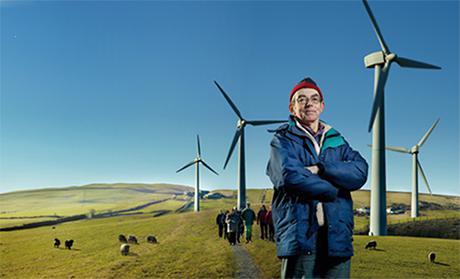 A version of this article first featured on Trillion Fund.
Contemporary capitalism has resulted in a concentration of wealth and power at the top of multi-national corporations and in the hands of a few ultra-influential individuals. The involvement in the US elections of, amongst others, the Koch brothers and Sheldon Adelson gives some indication of how democracy can be distorted by vested interests.
Decisions about the fundamentals of how we live, eat and power our homes are often made in boardrooms many miles from where we live – quite possibly in another country.
Combined to this, market uncertainties presented by both the spluttering global economy and politicians’ diverse attitudes to resource constraints contribute to a feeling of being increasingly buffeted by mysterious forces beyond our control.
SUPPORTED BY HEROES LIKE YOU
Support independent eco journalism that drives real change.If we are concerned with price rises, to whom do we voice our concerns? Only a sadomasochist would give it a go via an energy company’s ‘customer service helpline.’
Do we have to accept whatever price the market throws at us? Are we just cogs in a giant economic machine?
New approaches to ownership suggest that there are ways people can consolidate their position, get a better deal and build up resilience to future shocks.
The key may lie in actually buying a stake and co-owning infrastructure assets that previously have been considered the domain of governments and large companies.
By using new, online, collaborative platforms and pooling resources consumers are getting a better deal on everything from energy bills, access to cars and loans.
More than this, communities that come together to buy key assets and access a better price for services find that not only do they pay less, they get some control back and become more empowered to make important decisions locally. Evidence suggests this both rejuvenates a sense of real democracy and enhances lives (for example 1, 2, 3)
When a village is presented with plans for a wind turbine to be built in the fields behind the school, people can react angrily. They may express fears that it will be ugly, kill birds or hypnotize drivers into thinking they are in a plane. Part of this reaction may simply be a gut reaction to their turf being messed. It is another case of decisions being made remotely, without their consent and affecting their lives.
 Source: http://ow.ly/f4M59
There are an increasing number of accounts of enthusiasm replacing anger when local renewable energy assets are owned by and benefit the local community (for example 1, 23). Imagine a situation where villagers collaboratively finance the construction of a wind turbine. Not only do they get cheaper electricity, they also get a quarterly dividend from surplus electricity sold back to the grid.
Energy ceases to be abstract and mysterious. It is real, linked to the rotating blade over yonder and households are better motivated to understand it and use it wisely.
Other benefits are less easy to quantify but perhaps even more important. The community is more resilient. This means that should there be, for example, a war in the Middle East and market energy rates soar, this village can stay powered.
The organizational process of community ownership is itself of value. It feels good to come together and find solutions to shared challenges. What’s next? Neighborhoods might investigate crowdfunding a community space or opt to save the local post office. Perhaps shared funds could turn part of the village recreation ground into an allotment space? Or could a locally run car club reduce the total numbers of cars in the neighborhood, freeing space for a weekly farmers’ market?
When we rebel against the notion that we are powerless individuals, we can see an opportunity: by linking together, we can do better.



